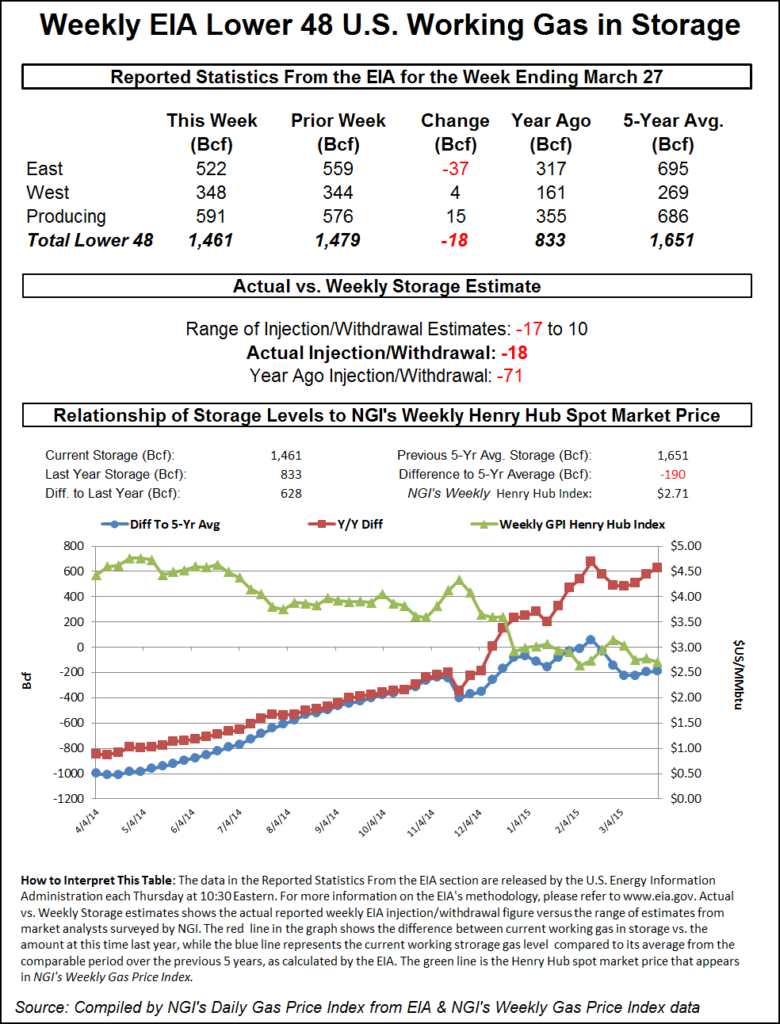Markets | NGI All News Access | NGI Data
Larger Than Expected NatGas Storage Draw Sends May Futures Up 7 Cents
Natural gas futures advanced Thursday following the release of government inventory figures showing a withdrawal that was not only greater than what the market was expecting, but also outside of survey ranges.

For the week ended Mar. 27, the Energy Information Administration (EIA) reported a decrease of 18 Bcf in its 10:30 a.m. EDT release. May natural gas futures rose to a high of $2.700 after the number was released and by 10:45 a.m. May was trading at $2.674, up 6.9 cents from Wednesday’s settlement.
Prior to the release of the data analysts were looking for a decrease averaging about 10 Bcf. A Reuters survey of 25 traders and analysts showed an average 10 Bcf draw with a range of -17 Bcf to +7 Bcf. Analysts at First Enercast were looking for a 12 Bcf decline, and Bentek Energy’s flow model predicted a 13 Bcf decrease.
“You got a little rally out of it, but that is not necessarily significant. We are still in a no-man’s land and prices would have to get above $2.73 to $2.74 or test the $2.51 to $2.55 area to draw any market conclusions. This is not much at all,” said a New York floor trader.
Tim Evans of Citi Futures Perspective noted that the number was greater than expectations and “closer to the 22 Bcf five-year average level, so bullish relative to expectations but more neutral in seasonally-adjusted economic terms. The figure does also suggest that the market supply-demand balance may also be a little bit tighter than some of the prior data had implied.”
Inventories now stand at 1,461 Bcf and are 628 Bcf greater than last year and 190 Bcf below the five-year average. In the East Region 37 Bcf was withdrawn and the West Region saw inventories increase by 4 Bcf. Stocks in the Producing Region rose by 15 Bcf.
The Producing region salt cavern storage figure was up by 11 Bcf to 132 Bcf, while the non-salt cavern figure increased 4 Bcf to 459 Bcf.
© 2024 Natural Gas Intelligence. All rights reserved.
ISSN © 1532-1231 | ISSN © 2577-9877 |
